Review: Charge It!
Publisher: Western Publishing Company
Year: 1972
Tagline: THE FAMILY CREDIT-CARD GAME

how we met
I found Charge it! just recently for 50 cents. The cover is cute. I like the 70s colors. I looked Charge It! up on BGG and saw that most of the ratings are above-average and it is full of delightful art, so I thought I’d take a chance on it.
how it plays
Your goal in Charge it! is to be the first player to collect $50,000 in debt over the course of however many rounds it takes for someone to win.
Players begin the game with 6 cards in hand, and players should always have 6 cards in hand. On their turn, players first draw a card and then play a card. The gameplay is very similar to Mille Bornes.
NOTE: The rules state that a player can draw from the deck or from the discard pile, however we only allowed drawing from the deck. If a game allows drawing from the discard pile, the order in which things get discarded is very important. Since the instructions did not address this we just skipped the drawing from the discard part.
Your goal is to play CREDIT CARDs and charge those puppies up. There are four different CREDIT CARDs in the game, and you can only play one of each in front of you at a given time. Each card has a different credit limit.
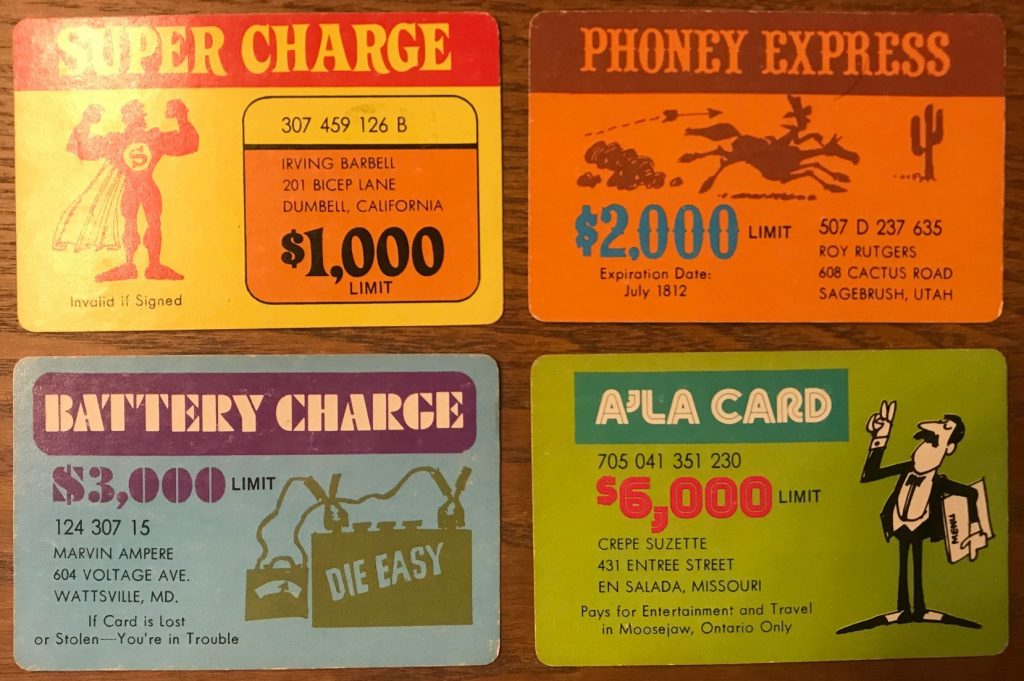
Once you have a CREDIT CARD in front of you, you can start to charge merchandise to it! You do this by simply placing a MERCHANDISE CARD face down under the CREDIT CARD. But here’s the trick: you can’t look at that merchandise again once you have played it, so you have to remember all of your charges to make sure you don’t exceed your credit limit!
The game also has EXTENDED CREDIT if things are feeling tight, or if you aren’t sure you went over. These all extend credit $2,500 and are also played face down under a CREDIT CARD.
The game also has LOST CARDs that you can play on another player’s CREDIT CARD to cancel it! You must play the matching LOST CARD as the CREDIT CARD you are trying to cancel. That player must immediately play a matching CREDIT CARD or an INSURANCE CARD from their hand to save their card. The INSURANCE card would stay on the CREDIT CARD to protect it through the end of the round. There are only four INSURANCE CARDs in the whole deck.
After a player plays either a CREDIT CARD or INSURANCE CARD to protect their card, they would also draw right away to make sure they continue to have 6 cards in hand.
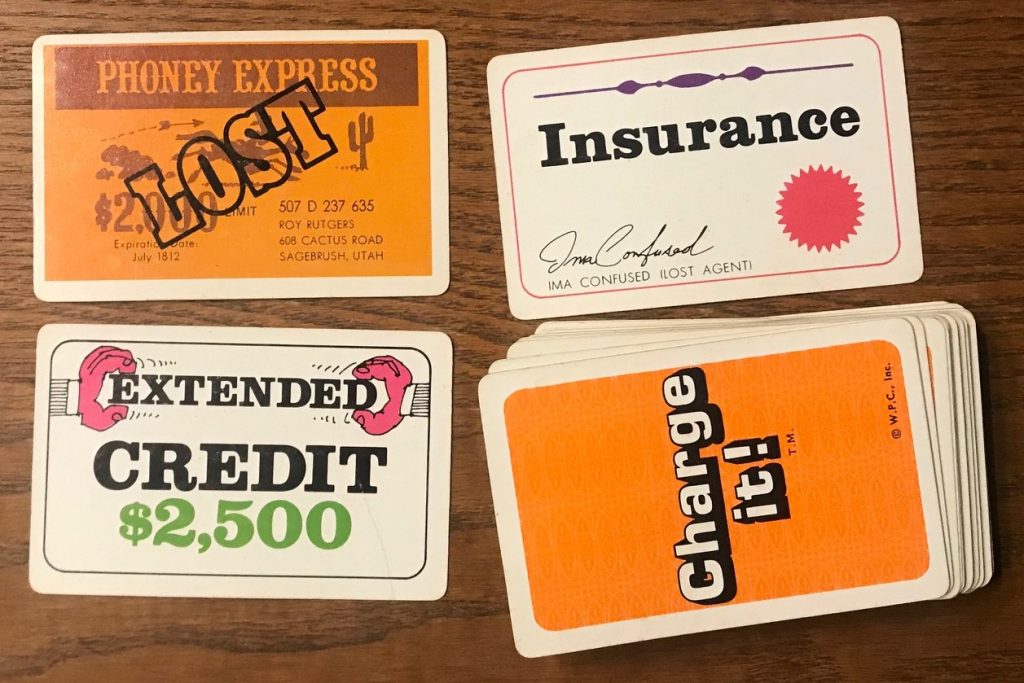
Once any player thinks they have accumulated at least $10,000 they end the round. All players count up the merchandise under their CREDIT CARDs. If a player went over their credit limit on any card then they receive no money points for that round.
The player that declared the end of the round gets a $2,000 bonus if they are over $10,000 and did not exceed any of their credit limits. If either of those terrible things happened, they get no points at all and no one gets the bonus!
The rules do not address whether play stops immediately when a player says they reached $10,000. We played as though play stops immediately and then the next round begins with the next player.
The first player to reach $50,000 wins Charge it!
how it went
We played Charge it! recently on a game night where Bill was absent, so we played 3 player. It took us five rounds until one of us hit $50,000 in winnings and won the game. So we had five separate, interesting rounds where different things were happening.
Keri set the tone every time she put a MERCHANDISE CARD under her CREDIT CARD and said something like, “Charge it!” or “I’ll put that on my Phoney Express!” or after losing her CREDIT CARD and drawing a new one declaring, “I reapplied!” I swear she is a professional cheerleader and just hasn’t told me yet.
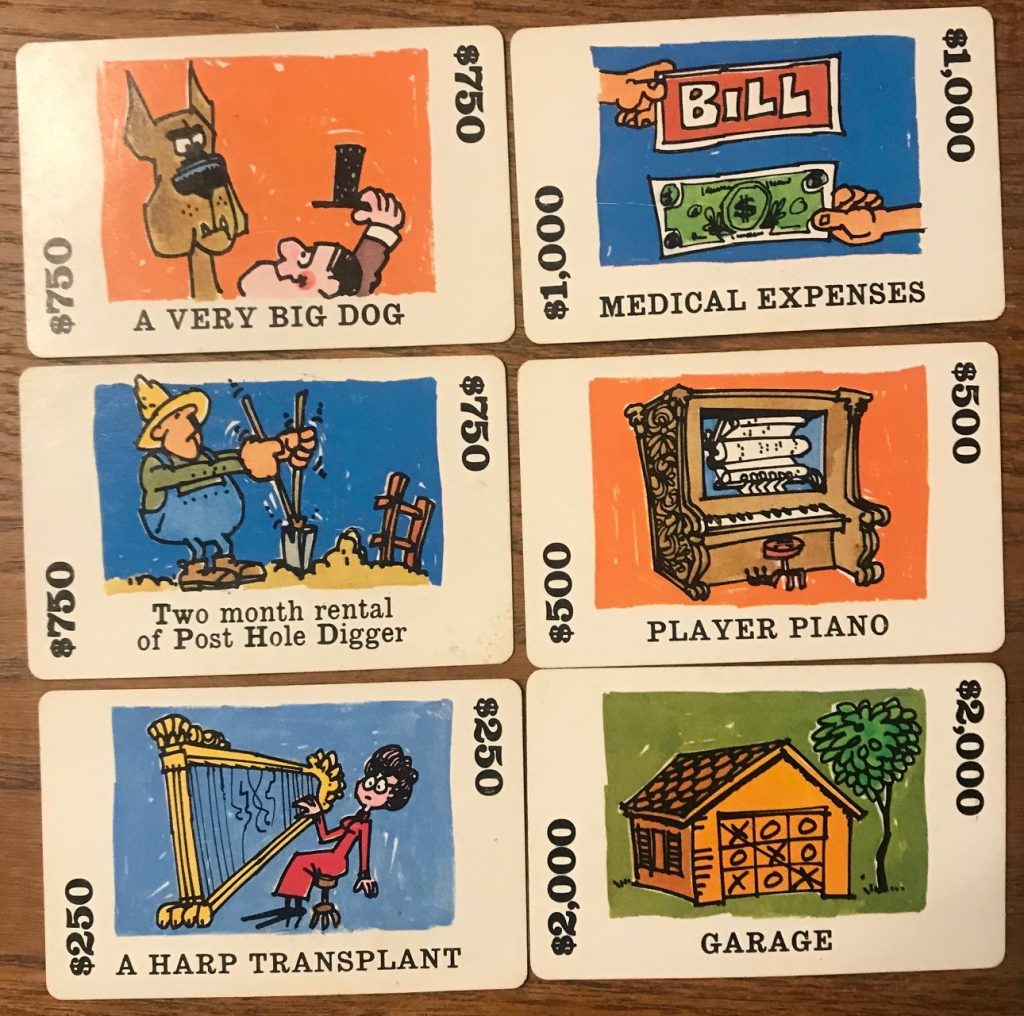
In my first round, I had such a hard time finding a CREDIT CARD!! You need a CREDIT CARD in front of you before you can start to really participate in play – except for LOST cards – so lacking a CREDIT CARD is a drag. But I think I only had to discard one MERCHANDISE CARD because I had a tiny CREDIT CARD with EXTENDED CREDIT, rather than no CREDIT CARD at all.
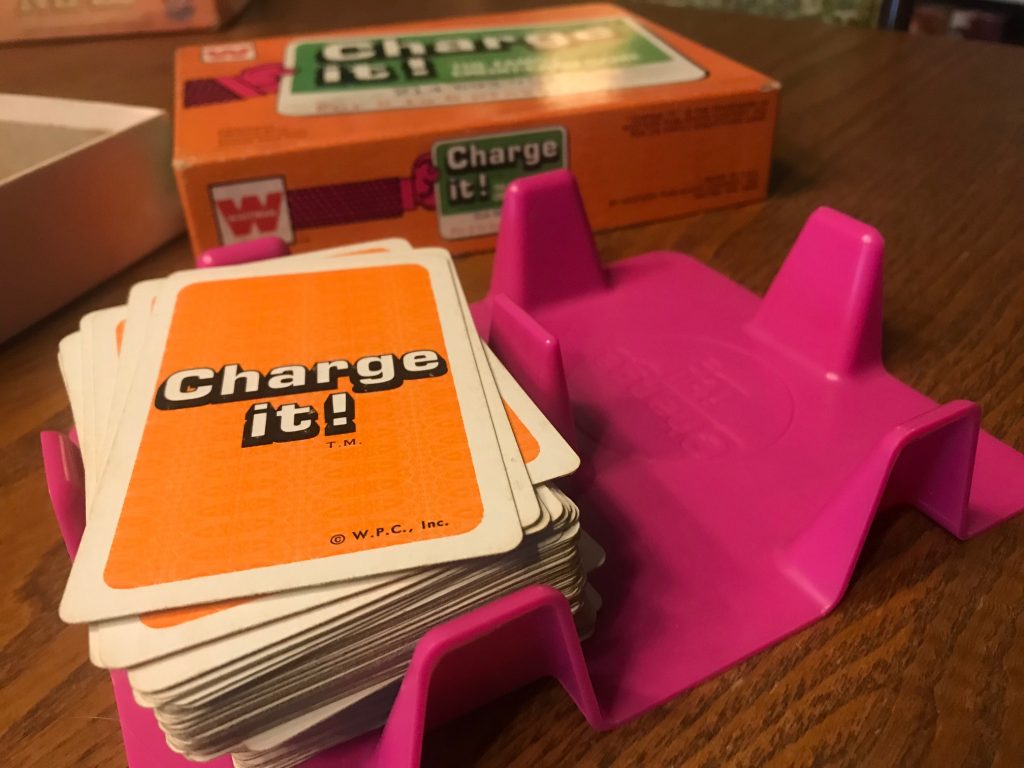
In the fourth round, I had a fully maxed A-LA CREDIT CARD with an EXTENDED LIMIT, so $8,500. I had a couple of other CREDIT CARDs too, but the funny thing about this round was that I kept drawing that same CREDIT CARD! I am not complaining, but it was so funny. I was holding what I think must be most of the high limit CREDIT CARDs in the game, in my hand. At one point John tried to cancel my super card, and all of the cards in my hand were face down in front of me. I mixed them up and drew one, showing the high-limit card and canceling his LOST CARD, and being grossly smug. When you play a card to cancel a LOST CARD you have to draw again right away, and I drew another high limit card. It was insane.
This same round Keri had a tough time. She could not find even a single CREDIT CARD to allow her to play any MERCHANDISE CARDs. She had to discard multiple items, cheerily asking, who needs a Player Piano? Who needs a truck full of sod?
Finally Keri had a $2,000 limit CREDIT CARD that she lovingly played. John immediately tried to cancel it, even though it had no purchases under it. This was perhaps my favorite part of the game. Keri yelled, “$&^@ you! Eat a #&$%!” and played an INSURANCE CARD on her only, empty CREDIT CARD.
John meanwhile seemed to be a magnet for INSURANCE CARDs. His CREDIT CARDs were unstoppable, but his luck drawing larger MERCHANDISE CARDs was less dependable.
The rounds varied quite a lot for us.
I was ahead most of the rounds, so I only needed a small amount of money to win during the fifth round. But Lady Luck certainly made me work for it. In this round I had more high level CREDIT CARDs, so I could play one somewhat safely. But I became alarmed as play continued and instead of drawing MERCHANDISE CARDs, I drew LOST after LOST after LOST CARD.
I don’t want to play LOST CARDs all willy nilly. Ideally a LOST CARD can be played strategically instead of played-or-discarded. But that round, I seemed to only have and only draw LOST CARDs. What’s a terrible friend to do? I came clean by saying to my friends, “This game wants me to rain hellfire down on you.”
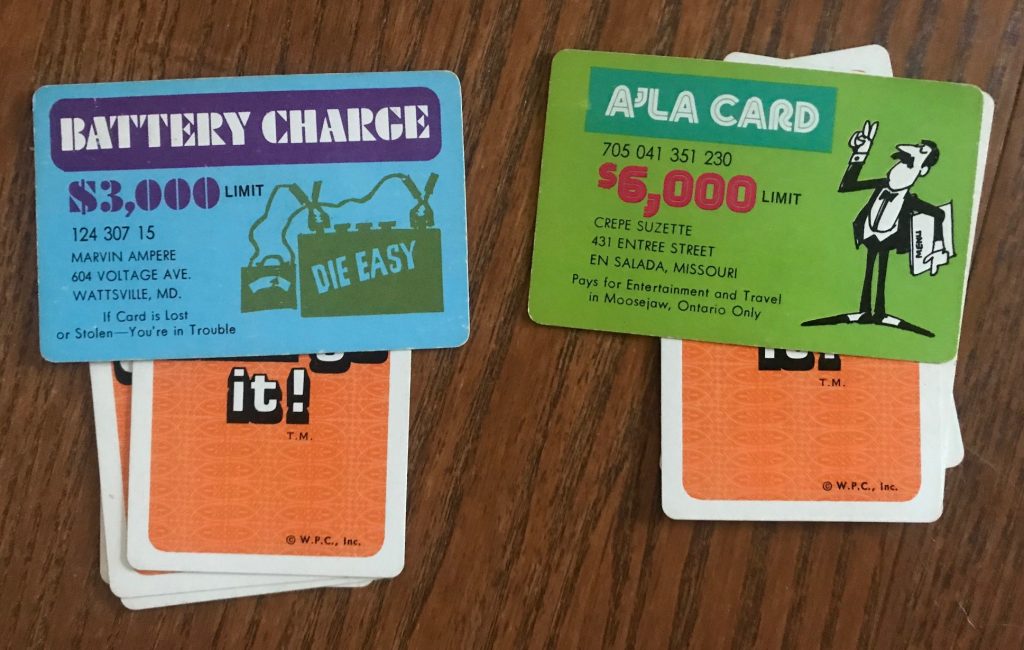
I have an awful memory, as you know, but I actually did pretty well in this game. I tried to wait until I could make even bursts of $1,000 whether it took a combination of cards or not. There was only one round where I was uncertain whether I hit $10,000 so I waited for what felt like a $1,000 buffer, but I only squeaked by with just $10,000. So that was a close one.
And I won Charge it!
play or pass
Play. There is inherent humor in a 1972 game encouraging you to play and charge up as many credit cards as you can, and to be the first to hit $50,000 in debt. I can see gameplay becoming too long, but as with all games where you play to a specific dollar goal, you can just lower the goal to shorten gameplay.
In addition to playing like Mille Bornes, this game reminds me of Burger Battle which we play every so often. Both require you to draw and then play one card on your turn. Both have nasty “take that” cards that extend gameplay. Both have fun art. The differences are that Burger Battle explicitly addresses discarding, and drawing from the discard pile can be important. That game also has an explosive game-resetting card. And Charge it! introduces the memory aspect of gameplay that Burger Battle does not. But for the record, I recommend both going on your credit card.